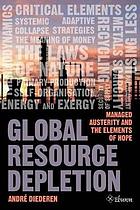
The problem of resource scarcity is not new. In the past, local resource scarcity—a well that had run dry, for example—could be solved by simply relocating to a new, undepleted area. Larger settlements avoided scarcity by trading with or conquering others for resources. The problem of scarcity was also resolved by finding comparable resources that had not yet been exploited. For example, Richard Hoffman’s An Environmental History of Medieval Europe describes how ruling entities in the Middle Ages used land management to regulate resource usage and ward off scarcity.
Medieval management principles faded as Europe came to view nonrenewable resources through a supply and demand economics lens. The supply-demand model for resource management, proposed by John Locke, is discussed in Eric Roark’s Removing the Commons. After the European Industrial Revolution, people began utilizing every nonrenewable resource they could find. Usage was regulated by supply and demand economic forces. Resource depletion was considered an acute problem best corrected with short-term adjustments.
Today, however, resource depletion is not so easily solved. According to André Diederen’s Global Resource Depletion, many countries are experiencing major renewable and nonrenewable resource shortages. In Scarcity, Christopher Clugston details how industrialization produced lifestyles that consume unprecedented quantities of resources. This is the case even in poorer communities and nations. Statistics from the US Department of Labor indicate that the consumer price index is dropping, according to the article “One Hundred Years of Price Change,” by Stephen Reed. This drop is most pronounced in consumer goods, particularly nonessential items that were once too expensive for underprivileged families. Consequently, the demand for the natural resources used to produce these goods increases as they become more affordable.
 Global Resource Depletion, Managed Austerity and the Elements of Hope
by
Global Resource Depletion, Managed Austerity and the Elements of Hope
by